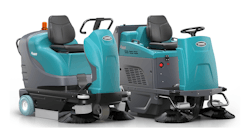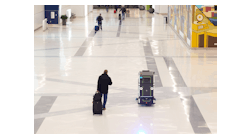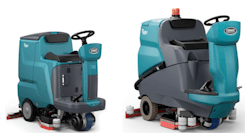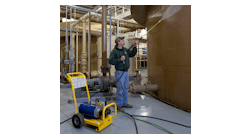Flying the friendly skies might leave some passengers feeling grounded. Delays, turbulence, and missed connections aren’t the only issues travelers face when they choose to fly. Airports are also incubators for all sorts of germs, and one recent study conducted by researchers at the University of Nottingham and the Finnish National Institute for Health and Welfare illustrates just how prevalent harmful pathogens can be.
By swabbing surfaces throughout Finland’s Helsinki Airport, researchers found illness-causing viruses all over security bins, concourse shops, railings and other high-traffic areas. With so much risk of infection posed by bacteria and viruses transmitted on surfaces, indoor air quality can be impacted, too. It’s all related, after all. Pollutants that appear on surfaces are also present in the air. In fact, a staggering 25 percent of the air samples taken from the same Helsinki Airport contained illness-causing bugs.
With this risk, it’s important to act now. The common cold and influenza are bad enough, but measles is currently making a comeback despite being declared eliminated in the United States nearly two decades ago. In the first six months of 2019, more than 1,100 cases of measles were diagnosed throughout the United States.
When a person infected with measles coughs or sneezes, the virus can live on surfaces and in the air for hours. That’s why it’s wise for airport leaders to mitigate the risks of disease transmission starting from the ground up — on floors, security bins and self-check-in kiosks, just to name a few. Although so much about the flying experience can be outside of their control, airport leaders can make meaningful changes to environmental hygiene by addressing these three areas:
1. The concourse: Keeping a spick-and-span terminal is a lot of work, and deep cleaning a high-traffic concourse can be a lengthy, disruptive process. The airport experience is challenging enough for some people — no one wants to be interrupted by a closed-off walkway while trying to catch a flight.
And though vacuuming is important, it’s not always enough. You’ll want to deep-clean the floors to truly promote good environmental hygiene. Steam cleaning has long been viewed as the traditional approach to carpet cleaning, but it’s actually more beneficial to use a cleaning method that doesn’t involve water or steam — especially in busy, crowded environments such as terminals. Why? Dry methods (those that don’t require steam or water) allow an area to reopen for traffic much more quickly.
2. Security lines: The biggest threat to a passenger’s health might be the security line. Think about all the hands touching security bins and the bacteria and viruses that can’t be seen or easily removed. It’s a gross thought, isn’t it? The fact that passengers sometimes move through this area without shoes — or worse yet, barefoot — only adds to potential health risks. That’s why putting floors, tables and trays through a rigorous cleaning process is so beneficial.
While cleaning, it’s important that the janitorial staff knows to throw away used cleaning wipes before scrubbing a new area. This will help minimize the risks of cross-contamination as the cleaning process moves from one spot to another. Using the proper cleaning solutions — and following the directions outlined on those products — is another important part of the process that maximizes the effectiveness of chemical agents.
When it comes to the cleanliness of those oft-walked hard surfaces in an airport (like tile, grout, linoleum, etc.), degreasing, sanitizing, and coating them ultimately removes germs, debris, bad odors and more. Garbage cans are obvious items that must be cleaned and sanitized, and handrails and other contact areas guests might encounter as they move through the security line also need attention.
3. Indoor air: You can certainly clean all the floors and scrub each surface inside your airport. But if your guests aren’t breathing in clean air, all that work will be for naught. That’s why it’s crucial that heating, ventilation, and air conditioning systems are maintained and operate in good, clean shape. HVAC equipment that uses ultraviolet germicidal irradiation is all the better. These UVGI systems make sure that your equipment — and your flow of indoor air — is without harmful pathogens that can make guests ill.
Don’t stop with the HVAC units, though. Using UV light machines in security lines and at gates can help disinfect the high-traffic areas where germs and viruses are most likely to live.
Consider how hospitals use UV lights to keep things sterile: Medical centers have begun using this light in tandem with disinfectant chemicals to prevent the transmission of germs that hang out inside patient rooms and cause new problems when new patients move in. Although the stakes aren’t as high at airports, UV lights are still a great way to keep germs to a minimum and make sure flyers are happy and healthy — all without oversaturating areas with cleaning products.
Airports are natural breeding grounds for some of the worst germs you can imagine and high-traffic areas, such as security checkpoints, are especially ripe for spreading bacteria and viruses that can make people sick. Don’t make the often-challenging process of flying even tougher for your guests. By developing clear expectations and considering new approaches, airports can improve their reputation and send travelers on their way without any hiccups — or anything worse.
Stephen Lewis is the technical director at milliCare, where he manages all equipment, methods, and products for the floor and textile cleaning company. Stephen, a certified senior carpet inspector and an IICRC master textile cleaner, has proudly served milliCare for more than 30 years. Get in touch with Stephen by emailing [email protected].





